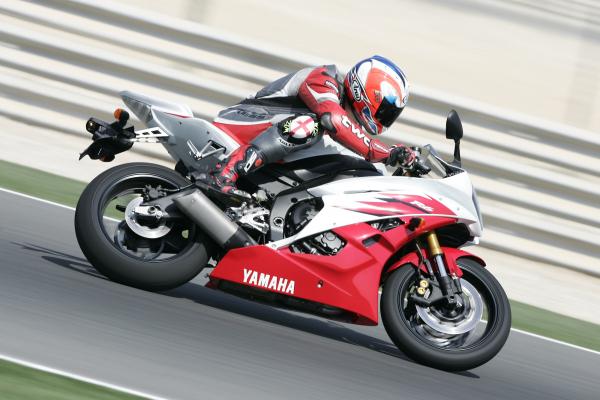
When did motorcycles go digital? When did electronics and riding aids and sophisticated displays take over?
At first it was subtle, that’s how they get you… well at least motorcycles haven’t quite followed the four-wheel trend of slapping massive iPad type device on the handlebars to then wonder why drivers ‘might’ be a tad distracted while on the road. Just saying…
Truth is, several tech innovations originate much further back down the historic timeline than you may realise.
And, just like ‘analogue’, mechanical technological advances such as advanced suspension, disc brakes or even multi-cylinder, liquid cooled engines changed motorcycling forever in the 20th century, ‘digital’ advances, mostly – but not all – in the 21st, have transformed our two-wheeled world.
But which are the most significant? So, without further ado…
1980 First fuel injection – Kawasaki Z1000H
In this modern age when virtually all production motorcycles are fuel-injected with impeccable fuelling it’s easy to forget that it wasn’t always so.
Remember the carbureted bikes of the 1980s and early ‘90s with their manual chokes, fuel taps and occasional carb-icing issues? Virtually all big bikes were successfully injected from the late 1990s-on but it’s pioneering use was mostly by Kawasaki, entering production with the 1980 Z1000H (KZ1000 in the US) when it was trying to keep its then ageing Z1000 ahead of newer rivals such as Suzuki’s GS1000 and Honda’s CB900F.
In truth, although effective, it wasn’t a huge commercial success, but it did act as a test bed for the far more successful GPz1100B1 of 1981. Honda’s first production fuel-injected bike, incidentally, was the CX500 Turbo of 1983.
1988 First ABS – BMW K100RS/K1
Ten years after the first Antilock Braking System was introduced on cars by Daimler-Benz, compatriots BMW offered the first motorcycle system as an option on its K100RS SE and flagship K1 models.
Although crude and heavy compared to modern systems it slowly paved the way for other manufacturers to follow suit. Honda first offered ABS on its 1992 ST1100A Pan European with Yamaha doing the same that year with the FJ1200.
1991 First digital dash – Bimota Tesi 1D
A potentially debatable one, this, depending on definitions. Yamaha’s R1 of 1998 was the first production bike to have a dash which was significantly ‘digital’, introducing a display with an analogue tacho but digital LCD panel for the speedo and ancillaries, a format that became the norm for most of the next decade.
But there were significant offerings before then, albeit on a more limited production sense. Bimota’s SB6R of the previous year had a smaller LCD panel, the 1994 Honda RC45 had an LCD digital temperature gauge and plenty of bikes of the era had LCD digital clocks.
The 1992 NR750, meanwhile, had a substantial LED panel for speedo, temperature etc. But the most significant, surely (albeit very niche) in the 1991 Bimota Tesi 1D which had a completely digital ‘dash’ with an LCD strip tacho and separate LCD panels for temperature, speed, twin odos and fuel. And it was rubbish!
2006 First ride by wire – Yamaha YZF-R6
On October 31 2005 Yamaha released details of its all-new 2006 R6 which, along with a fuel-injected 599cc four cylinder engine with four titanium valves per cylinder and a boggling 17,500rpm redline, making maximum power of 133bhp at 14,500 rpm stood out most for being the first production motorcycle with a ride-by-wire throttle.
At that time it wasn’t a ‘pure’ system – there were still throttle cables, but they ran to a computer which then calculated the optimal throttle valve opening, operating the throttle valve by an electric motor drive.
Nor did Yamaha maximise the potential of the system in terms of power modes etc, instead choosing it to optimise response through what it called Yamaha Chip Controlled Throttle (YCC-T), but it was the start which would lead to all the fantastic electronics we have today.
2007 First traction control/IMU – Ducati 1098 R
After launching its mould-breaking ‘Euro-tourer’, the ST1100 Pan European in 1990, Honda followed it up two years later with the ST1100A with both a rudimentary ABS system (see above) AND fairly crude (by modern standards) traction control system (TCS), too.
The modern system of TC, however, which works via the bike’s ECU cutting power according to sensors detecting differences between front and rear wheel speed and an IMU (Inertial Measurement Unit) calculating the bike’s lean angle, was developed by Bosch in the early Noughties and introduced with Ducati’s race-spec 1098R in 2007.
It had a full eight different TC settings, immediately impressed and was quickly followed by most rivals.
2007 First power ‘modes’ – Suzuki GSX-R1000 K7
Yamaha’s 2006 introduction of Ride-by-Wire and electronic Engine Control Units (ECU’s – microprocessors which calculate and enable required engine performance according to various electronic inputs) opened up the whole world of potential electronic ‘Rider Aids’ – the most obvious and immediately enacted one being switchable power modes.
Suzuki were actually one of the first to provide this feature on a number of its 2007 models, most notably on its new GSX-R1000, which had three modes available, but also on its bonkers B-King, which featured an A and B mode, one full power, the other cut for use in the wet.
2008 First electronic suspension – BMW R 1200 GS (& others)
Here’s another debatable one, depending on your definition of electronic. BMW’s brilliant ESA (Electronic Suspension Adjustment) system was introduced in 2008 as an option on a variety of its models and is basically a push button suspension adjustment system which altered the preload of the rear shock through two (or sometimes three) pre-set settings via a handlebar control and stepper motor.
Other manufacturers have since followed. However, things get more complicated when you start talking about ‘self-adjusting’ ‘active’ suspension systems. BMW were again pioneers when, with its top-spec HP4 version of its S1000RR superbikes, it introduced its new Dynamic Damping Control system in 2013/14, which adjusted the rebound and compression damping of the shock automatically as you rode along.
While its optional Dynamic ESA (D-ESA) system was introduced the same year on the GS and added an ‘active’ aspect to ESA by incorporating a dedicated ECU and linking it to other settings and sensors on the bike.
2010 First fully-integrated riding modes – Ducati Multistrada 1200 S
Ducati simply revolutionised motorcycling when it introduced its all-new Multistrada 1200 (or, specifically, its Multistrada 1200 S) in 2010.
What set it apart was not the base components – the decent chassis, retuned Testastretta V-twin and more were all familiar – but its fully-integrated, adjustable electronic modes. In 2010 switchable engine power maps, traction control and electronically adjustable suspension were nothing new.
What was – and what the S did brilliantly (the base 1200 didn’t have electronically adjustable suspension) – was linking them all together into four different pre-set riding modes which changed the bike’s character, performance and comfort completely.
Today, this sort of convertibility (is that a word?) is almost commonplace. In 2010 it was astonishing.
2014 First cornering ABS – KTM 1190 Adventure
After switchable power modes, traction control, riding modes and more the seemingly last remaining electronic holy grail was Cornering ABS until Bosch cracked it and KTM introduced it first in 2014.
After all, ABS vertically, in a straight line, was easy to get your head round (but actually of limited use). But ABS while cranked over round a bend?
Must be some kind of witchcraft. Actually, it was, again, all to do with IMUs and sophisticated computing and was so effective nearly all higher end bikes are now so equipped. But KTM (and Bosch) got there first.
Bosch’s great German rival, incidentally, Continental, also developed its own system soon afterwards, supplying it first to BMW’s S1000XR…
2016 First TFT colour dash – Ducati Monster 1200 R
Another first (we think) for Ducati – although if you know different please remind us, we’re not perfect! Today, TFT displays/screens/dashs have become the norm and seem to be getting bigger and more sophisticated (complicated) every year.
The first on a mainstream motorcycle, however, came, in 2015, on Ducati’s fully-updated Multistrada 1200 S (although, being monochrome, in reality looked similar to an LCD version) with the first colour version the following year with its Monster 1200R.
After that, the floodgates opened. ‘TFT’ of course, stands for ‘Thin Film Transistor’ and is basically a refined, more sophisticated version of LCD that allows sharper design, increased visibility, extra sophistication and features and more.
Old analogue dials, by comparison, now seem like something from the Stone Age…
Additional reporting by Ollie Barstow

